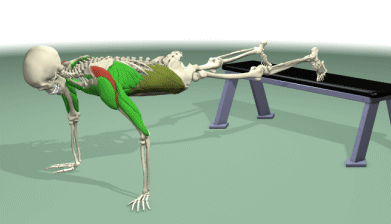




THE FITNESS
DIGEST.
Definition
Preventive dentistry is the area of dentistry that focuses on those procedures and life practices that help people to prevent the beginning or progression of oral disease. It includes at-home dental care performed by patients, as well as dental care and education teachers and by professional dental staff in the office or clinic.
Purpose
Preventive dentistry includes two aspects of dental care, both performed to help patients avoid dental disease or to catch it in its early, more treatable stages. In part, it is the oral hygiene care performed by the patient at home. Preventive dentistry also encompasses what is done by teachers in schools in teaching good oral hygiene practices by frequent brushing, the dental staff by visiting schools to help students maintain healthy teeth and gums. In either case, the objective is to stop the development of oral disease or to find it at an early stage. Dental health professionals most often look for early signs of periodontal disease, dental decay, and other changes in the soft tissue of the mouth that could lead to oral cancer.
Description
An important part of preventive dentistry performed by dental professionals is educating patients about at-home care, nutrition, and smoking cessation. At-home procedures performed by patients that help ward off dental disease include regular and proper brushing, flossing and sometimes use of mouth rinses and at-home fluoride applications. Dentists and their staff explain proper brushing and flossing techniques. Proper brushing includes use of a soft nylon toothbrush with round-ended bristles. Patients should place the bristles along the gum line at a 45-degree angle to cover the tooth surface and gum line.
The brushing technique should be gentle and in a rolling back-and-forth motion, with two to three teeth being brushed at a time. Patients should brush the inner surfaces of their teeth and tilt the brush vertically to brush the front teeth. Ideally, patients should use a back-and-forth motion to brush the biting surface of the teeth and the tongue. Flossing removes plaque from between teeth and at the gum line. It should be done with an 18-inch strip of floss wrapped around the middle fingers of each hand. The remaining one to two inches of floss that is inserted between the teeth should be directed by the thumbs. By keeping the floss taut, patients can use their index fingers to guide the floss between the lower teeth with a gentle zig-zag motion, while contouring the floss around the sides of the teeth. They should floss each tooth with a clean section of the floss and ensure that the floss goes under the gum line.
Preventive dental care should begin in infancy, within the first year of life before teeth first appear, and continue throughout life. Even before teeth erupt, parents can clean infants' gums after feeding. Preventive care in adolescence includes brushing and flossing, as well as wearing custom-made mouth guards to protect the teeth during contact sports.
Seniors often benefit from training in proper techniques of denture care and cleaning, which include brushing the replacement teeth. Those who have problems moving their hands because of arthritis, for example, also benefit from tips for adapting toothbrushes for easier handling.
KEY TERMS
Calculus—A hard deposit formed when teeth are not brushed properly.
Dental decay—The destruction of the tooth enamel.
Fluoride—A naturally occurring mineral in all water sources, which effectively prevents and reverses the early signs of tooth decay.
Malocclusion—Bad bite.
Periodontal disease—Gum disease, which is an infection of the soft tissues supporting the teeth.
Plaque—The thin, sticky film of bacteria that grows on teeth.
Prophylaxis—Dental cleaning.
Results
The results of good preventive dental care are healthy teeth and gums throughout one's life and the early detection of oral disease. Preventive procedures, such as fluoride applications and sealants, can prevent tooth decay. Regular dental checkups and oral cancer screenings can catch oral cancer at its most treatable stages. Dental checkups and consistent at-home preventive dental care can stave off caries (tooth decay) and periodontal disease, which can lead to tooth loss. An estimated 75% of adults have periodontal disease.
Regular dental checkups can reduce the risk of permanent tooth and gum damage, and expensive treatment in the future. As a result of preventive dental care, people tend to keep their original teeth throughout life and don't need as much restorative dental work. Preventive dental examinations also ensure that a dentist will notice any oral signs of systemic disease. A dental checkup might reveal a lesion in the mouth that could lead to a referral to a physician for further investigation.
Treatments resulting from preventive dental procedures are designed to stop the process of the disease. Restorative dentistry, including the placement of fillings, crowns, and dental work, addresses tooth decay and tooth loss that can result from periodontal disease. Periodontal treatments help restore healthy gums and can prevent tooth loss.
Health care team roles.
The dentist oversees the process of examination, diagnosis, treatment planning, and education. The allied dental personnel include the dental hygienist and dental assistant. Dental hygienists sometimes perform preventive techniques, including cleaning, fluoride and sealant application, and patient education.
Preventive Dentistry
Physical fitness Disclaimer and Waiver of liability:
Exercises are not without their risks and the exercise programs in this website may result in injuries.Any person who undertakes these exercises does so at their own risk.To reduce the risk of injuries ,you should consult your doctor before beginning these or any other exercise programs.As with any exercise program ,if at any point during your workout you believe conditions to be unsafe or begin to feel faint or dizzy,have physical discomfort or pain, you should stop immediately and consult a physician.
Daily exercise for Working women.
Jumping Jacks. . Effective workouts.
Group exercise and its benefits.
Calf raises-free style . Push ups.
Tummy exercises. Hoola Hooping .
Fitness Motivational tips. Barbell Squauts.
The myths of spot reduction. Leg press.
Standing calf raises. Concentration curls.
Bench (Tricep) dips.. One arm dumbbell rows.
Pec deck Flye. Fr0nt dumbbell raises. Glute ham raise.
Seated leg curl . Close grip bench press .
.

Please keep comments positive and constructive.
Help the WEBSITE by reporting inappropriate comments to thefitnessdigest@gmail.com . Inappropriate comments may be reported and/or removed.